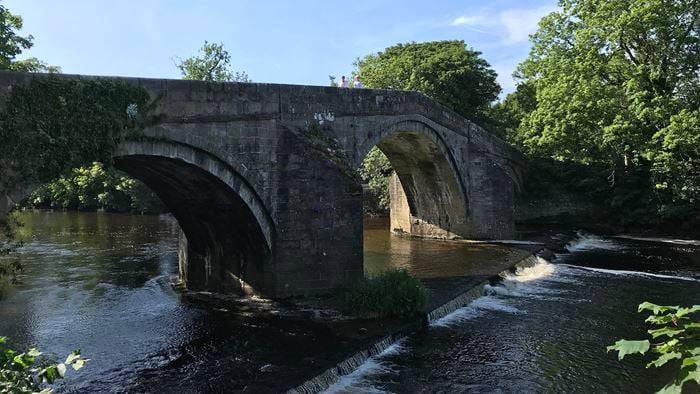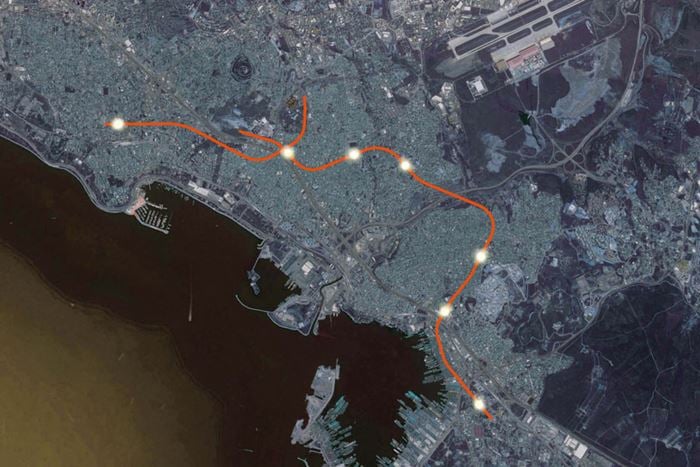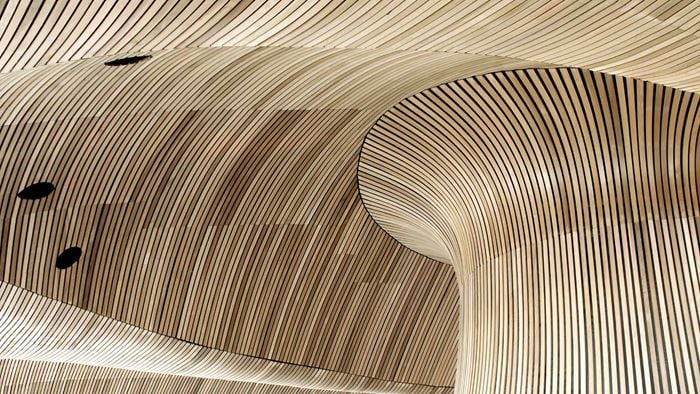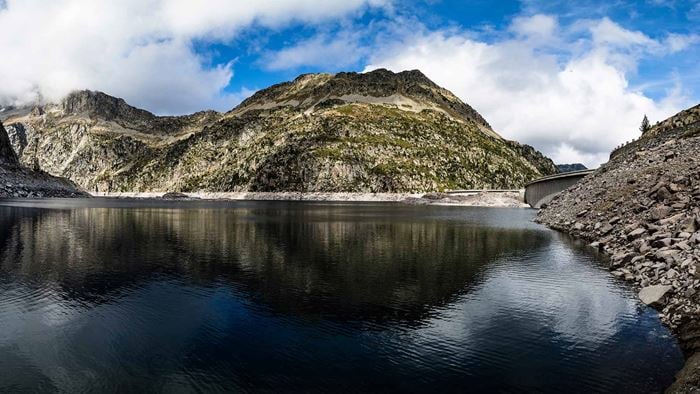The Castleford Weir fish pass is fundamental to the Environment Agency’s efforts to improve the quality and biodiversity of the River Aire.
Fish migratory routes often encounter obstructions, typically weirs, preventing passage upstream. The Castleford Weir fish pass allows fish to overcome these barriers.
Arup’s design had to provide water speeds in the fish pass that were slow enough to allow even the weakest species in the river to swim against the current. To achieve this, the floor of the pass incorporates baffles, or vanes, which generate counter-currents to reduce the speed of the water. Attracted by the water discharging from the pass, fish swim up a sloping channel with two 8 m-long flights, resting in a 3 m-long pool between flights. Video camera equipment monitors the use of the fish pass.
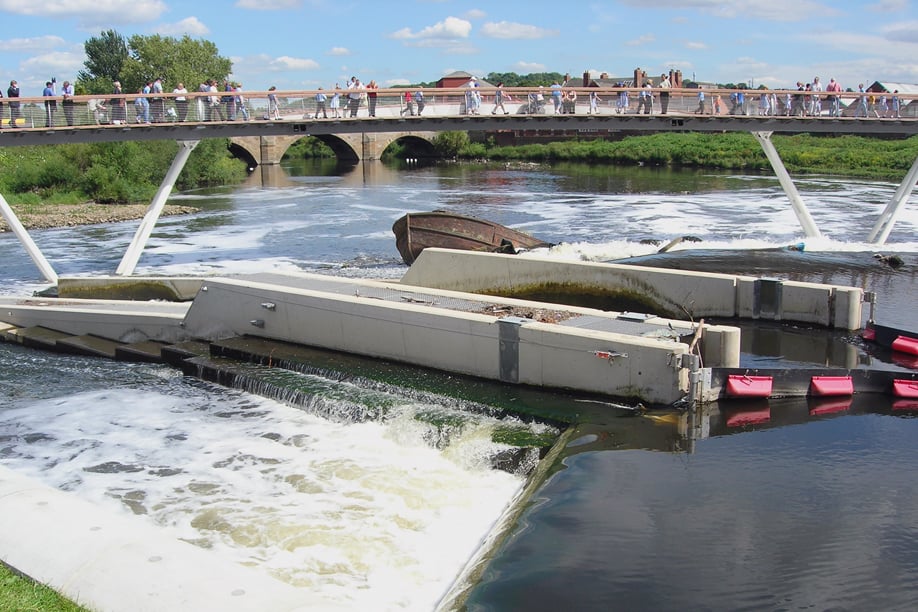
Located away from the bank to prevent public access and ensure safety, the design of the pass also considers access for maintenance and the effect that construction would have on the existing masonry weir.
Allowing fish migration past the weir has a positive impact, not only on the health and diversity of the fishery, but also on the sustainability of other species such as otter, kingfisher and bittern, which have recently returned to the River Aire.
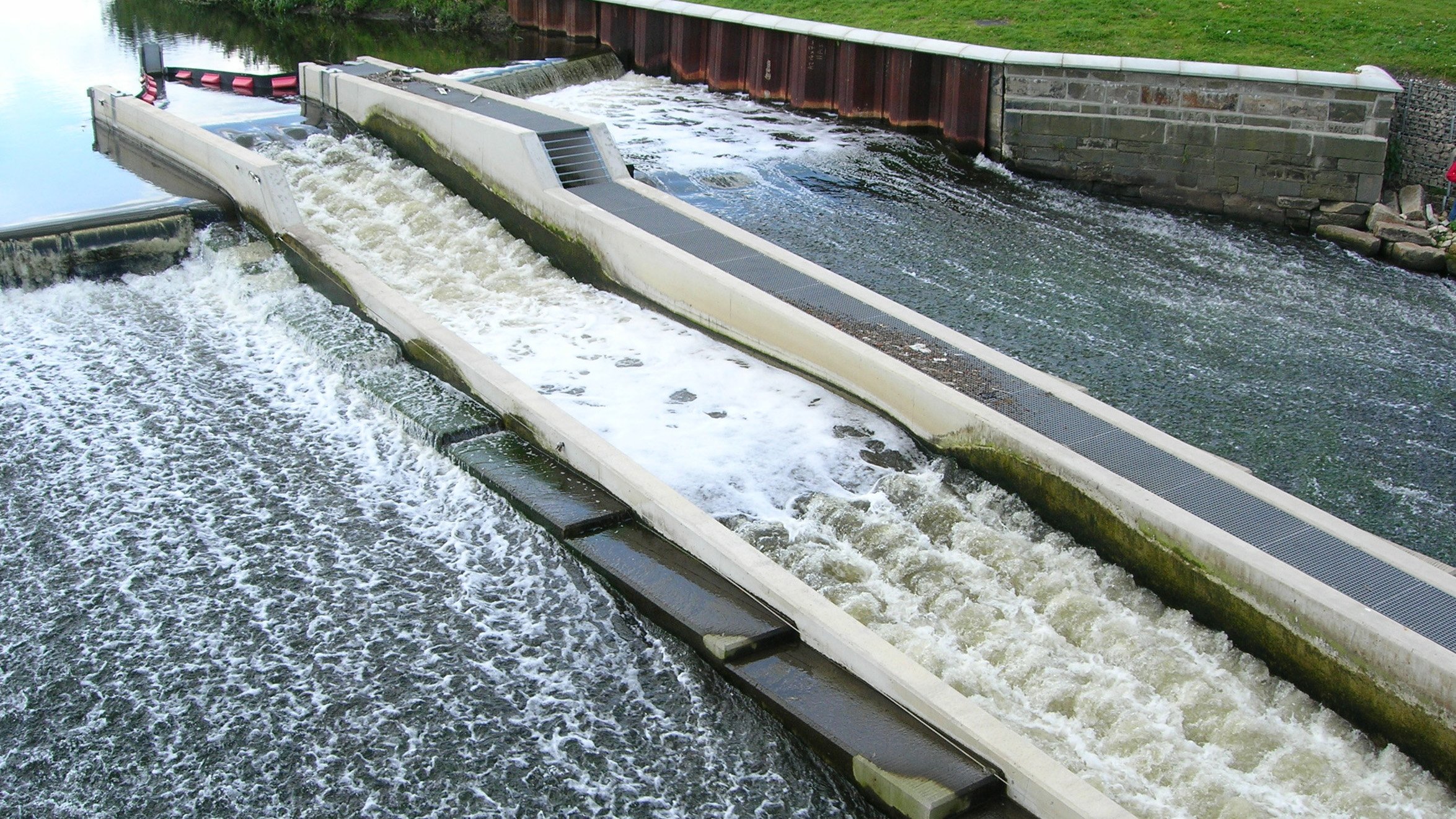 ;
;

